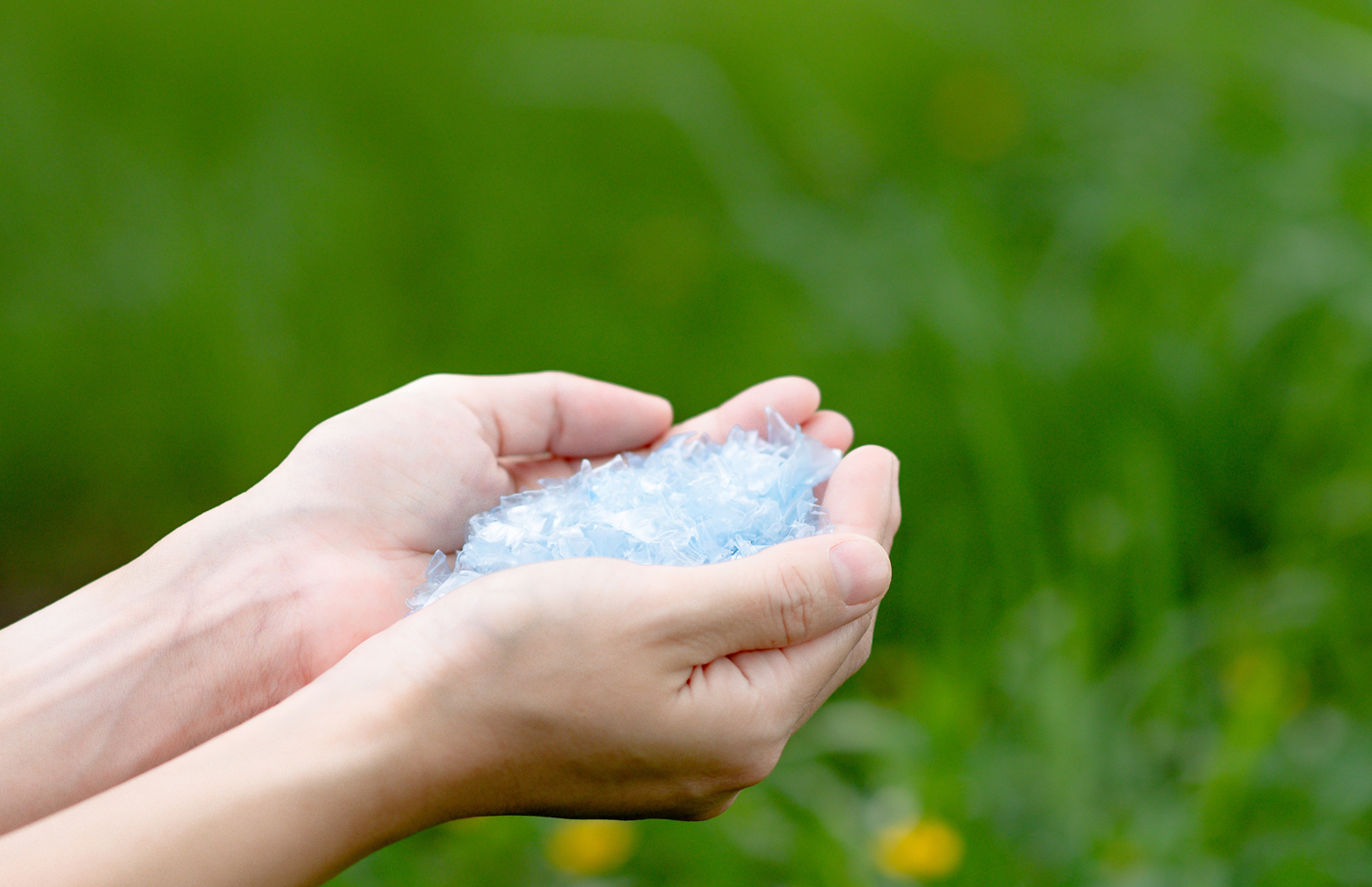Since October 10, 2022, new rules on the use of recyclates for food contact materials have been in force in the EU. The regulation will apply from July 10, 2023. In order to boost the market for recycled plastics, the EU Commission’s latest proposal for the new Packaging and Packaging Waste Regulation (PPWR) goes one step further – and stipulates a minimum percentage of recycled material new packaging. A product-specific approach was chosen. There’s a lot of movement on the subject. We go into detail for you.
In their Green Deal, European regulators announced that they would make Europe the first climate-neutral continent by 2050. This can only be achieved through a comprehensive circular economy. The use of recyclates in plastic products and packaging should make an important contribution. Because it reduces dependence on fossil raw materials, secures the supply of raw materials for the plastics industry and reduces CO2 emissions in the manufacturing process.
10 million tons of recyclate by 2025
The EU Commission and the Circular Plastics Alliance have set themselves the goal of using a total of 10 million tonnes of recyclates in plastic products and packaging by 2025. This not only requires the appropriate quantities, but also the appropriate quality. Especially when it comes to use in food packaging.
The first step from July 2023
On October 10, 2022, the EU passed new rules on the use of recyclates in food contact materials. The regulation applies from July 10, 2023 and contains clear rules for the safe use of recycled plastic in food packaging. According to this, plastics with recycled content may only be placed on the market if
- the recyclate was produced using “suitable recycling technology”. Mechanical recycling of post-consumer PET waste or recycling in closed loop systems are considered suitable.
- Alternatively, “novel recycling technologies according to the regulation” are also permitted. However, the approval procedure that “new” recycling processes have to go through is very complex and can take up to seven years.
The second step in the PPWR
The draft for the new Packaging and Packaging Waste Regulation (PPWR) presented by the European Commission in November 2022 sets specific target quotas for the use of recyclates – and thus leads to far-reaching changes. With the specification of fixed minimum recycling rates, Brussels wants to create the necessary security of demand so that the necessary investments can be initiated on the supply side .
The product-specific approach
Against the resistance and recommendations of industry associations, the EU has decided against a material or polymer-specific substitution quota. On the other hand, a product-specific approach is used. However, this only differentiates between disposable beverage bottles, food contact sensitive and other plastic packaging.
Brussels had already opted for the product-specific approach when it came to the existing, binding regulation for PET beverage bottles. By 2025, PET bottles must contain at least 25 percent recycled material. But by 2030, the minimum quota will rise to 30 percent – and will then also apply to bottles made of other plastics.
Target Quotas of the PPWR
If the draft for the new PPWR is implemented as planned, recycled content quotas between 25 and 50 percent will apply, which will be introduced in two stages. Concrete:
- For contact-sensitive packaging such as food packaging
- 30 percent from 2030
- 50 percent from 2040
- For disposable plastic beverage bottles
- 30 percent from 2030
- 65 percent from 2040
- For other plastic packaging
- 35 percent from 2030
- 65 percent from 2040
Challenges in capacity building
When putting the new requirements into practice, producers and distributors face major challenges. Because for contact-sensitive plastic packaging such as food packaging, there are currently only approvals for materially manufactured recyclates made of PET. It is neither clear nor foreseeable which recycled plastics other than bottle PET will be able to meet the high requirements in the future .
Chemical recycling
The Association of the Chemical Industry (VCI) and the FDP therefore call for a combined use of mechanical and chemical recycling processes in order to enable the ecologically, technically and economically best use of waste streams.
In the eyes of the VCI and FDP, the recognition of chemical processes as a suitable recycling technology is a central requirement in order to be able to ensure the required quantities of recyclate to meet all relevant recycling and recyclate use quotas.
Proponents and opponents of chemical recycling each argue based on studies and analysis:
Pro:
- A recent study by IDTechEx predicts a recycling volume of 20 million tons of plastic waste per year for pyrolysis and depolymerization plants by 2033.
- SystemIQ’s recently published study shows that a complementary application of mechanical recycling, chemical recycling and reuse in the PET/polyester system has the potential to optimize environmental and socio-economic benefits.
Contra:
- In their study, a research team from the Öko-Institut eV, based on numbers and assumptions used, proves that the greenhouse gas emissions from pyrolysis are nine times higher than those from mechanical recycling of plastic waste. In addition, more than half of the plastic is lost and has to be replaced with new primary plastic. According to the institute, these factors hinder a circular economy.
- In its position paper, the WWF in particular advocates that chemical recycling processes should have at least 20 percent fewer GHG emissions compared to virgin plastic production.
Conclusion
There is a lot of movement in the topic – and the challenge is global. It can only be mastered if those responsible for the entire value chain work together. Political decision-makers, NGOs and mechanical and chemical recyclers can only achieve the goal of a circular plastics economy as a team.

